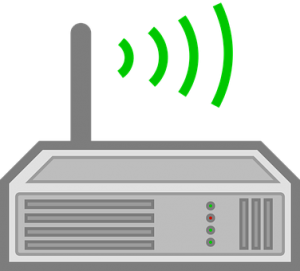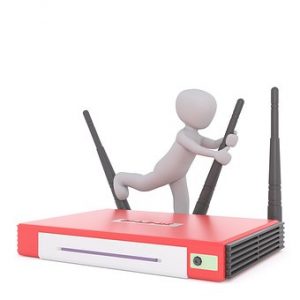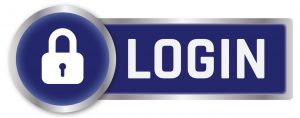Netgear Router Login
Welcome to our comprehensive guide on accessing the Netgear router login page. In today’s digital age, a stable and secure home network is essential, and Netgear routers have earned their reputation as reliable networking solutions. In this blog, we will walk you through the step-by-step process of Netgear router log in, granting you the ability to personalize settings, ensure top-notch security, and optimize your network’s performance. Whether you’re a tech-savvy enthusiast or a newcomer to networking, this guide will empower you to take control of your network like a pro. So, let’s dive into the world of Netgear router login and unleash the full potential of your home network.
 How to Login To Netgear Router:
How to Login To Netgear Router:
To login to Netgear router, you’ll need to access its web-based interface using web browser. This interface allows you to configure various settings for your router, including wireless network settings, security options, and more. Here’s how you can log into Netgear router:
Before you proceed the Netgear router log in, make sure you are connected to the router either via wired (Ethernet) connection or a wireless connection.
- Open a Web Browser: To log into Netgear router, launch a web browser on a device that is connected to your Netgear router’s network. You can use browsers like Chrome, Firefox, Safari, or Edge.
- Access the Router’s Web Interface: Enter the default IP address for Netgear routers in the address bar of your web browser. The default IP address is often “192.168.1.1” or “192.168.0.1”. Press “Enter” after typing the IP address.
- Login Page: You will be directed to Netgear router login page. Here, you should see a username and password prompt. If you haven’t changed the login credentials, use the default username and password. Typically, the defaults are:
- Username: admin
- Password: password
- Login: Enter the username & password into the respective fields & click on the “Login” button. If the default login credentials do not work, it’s possible that you might have changed them in the past or that your Internet Service Provider (ISP) provided you with custom Netgear log in information.

- Router Dashboard: Upon successful Netgear log in, you’ll be directed to the router’s web-based dashboard or configuration page. This page allows you to customize various settings related to your router and network. Be cautious while making changes, as incorrect settings can affect your network’s performance.
- Change Login Credentials (Recommended): For security reasons, it’s strongly recommended to change the default username & password. Navigate to the appropriate section within the dashboard to change these credentials. For Netgear router log in, to prevent unwanted access to your network settings, create a strong and unique password.
Remember that the steps outlined above are based on general practices and might vary slightly depending on specific model and firmware version of your Netgear router. Additionally, keeping your router’s firmware up-to-date is crucial for security and functionality. Check for firmware updates on Netgear website and follow the provided instructions to update your router’s software if necessary.
Common Netgear Router Login Issues:
Netgear router log in can sometimes be accompanied by a variety of issues that users might encounter. These issues can stem from different sources and circumstances, potentially causing frustration and hindering the configuration or management process. Here are some common Netgear log in issues that users might face when trying to access their router:
- Incorrect Credentials: One of the most common issues is entering incorrect Netgear log in credentials, such as the username or password. This can happen if users forget their custom Netgear router login details or if they haven’t changed the default credentials.
- Browser Compatibility: Some users might experience difficulties accessing the router interface due to compatibility issues with their web browser. Certain browser settings, extensions, or outdated browser versions might prevent the interface from loading correctly, leading to Netgear router log in.
- IP Address Conflicts: IP address conflicts on the network can lead to difficulties accessing the Netgear Router login page. When numerous devices use the same IP address, it can cause confusion and impede traffic routing to the correct device, leading to Netgear log in issues.
- Network Connection Problems: Unstable or intermittent network connections can disrupt the Netgear log in process. A weak Wi-Fi signal or connectivity issues with the Ethernet cable can prevent the router’s interface from loading properly.
- Router Firmware Issues: Outdated router firmware might lead to compatibility problems or security vulnerabilities. If the router’s firmware is not up-to-date, it could potentially cause issues during the Netgear router login process.

- Cache and Cookies: Browser cache and cookies might cause issues when trying to access the router’s web interface. Stale cache data or conflicting cookies can interfere with the loading of the Netgear router log in page.
- Firewall or Security Software: Overly aggressive firewall settings or security software on the computer can block access to the router’s interface. This can prevent users from reaching the Netgear log in page.
- JavaScript or Java Issues: The router’s web interface often uses JavaScript or Java components. If these components are disabled in the browser or are outdated, it can result in Netgear router login issues.
- Router Hardware Problems: In some cases, hardware problems within the router itself, such as a malfunctioning network port or internal component, can prevent users from successfully login to Netgear router.
- Factory Reset: If users attempt to log into Netgear router after a factory reset without reconfiguring their settings, they might encounter difficulties due to mismatched settings or a lack of customization.
It’s important to approach these Netgear log in issues systematically and try to identify the root cause. If you’re experiencing problems while trying to log in to your Netgear router, refer to troubleshooting guides provided by Netgear. Keep in mind that the specific steps to resolve these issues can vary based on the exact nature of the problem and the router’s model and firmware version.
How to Fix Netgear Router Login Issues:
If you’re experiencing can’t login to Netgear router there are several steps you can take to troubleshoot and resolve the problem. Here’s a step-by-step guide to help you fix Netgear router login issues:
- Verify Credentials: If you can’t login to Netgear router, double-check that you’re entering the correct username and password. If you’ve changed these credentials in the past and can’t remember them, you might need to perform factory reset on the router to restore the default Netgear log in details.
- Clear Browser Cache and Cookies: Browser cache & cookies can sometimes cause login problems. Clear your browser’s cache and cookies if you can’t access Netgear router login page.
- Use the Correct IP Address: If you can’t login to Netgear router, ensure you’re using the correct IP address to access the router’s web interface. The default IP addresses for Netgear routers are usually “192.168.1.1” or “192.168.0.1”. If you’ve changed the IP address in the past, use the one you’ve set.

- Try a Different Browser: Some browser-related issues can be resolved by using a different web browser. If you’re experiencing problems with one browser, try accessing the Netgear router’s log in page using a different browser.
- Disable Firewall and Security Software: Temporarily disable any firewall or security software on your computer, as they might be blocking access to the Netgear log in page. Make sure to re-enable these features after troubleshooting.
- Check Network Connection: If you can’t access Netgear router login page, ensure that your device is connected to the Netgear router’s network, either via Ethernet or Wi-Fi. Without a proper network connection, you won’t be able to access the router’s interface.
- IP Address Conflict: An IP address conflict can cause issues. Check that your device’s IP address is within the same subnet as the router’s IP address. You can release and renew your device’s IP address through the command prompt (Windows) or terminal (macOS/Linux).
- Update Firmware: Outdated or corrupted firmware can lead to login problems. Check for firmware updates on Netgear website for your router model and install any available updates.
- Perform a Router Reset: If none of the above steps work, you might need to perform a router reset. Keep in mind that this will erase any custom settings you’ve configured. To reset your router, locate the reset button (usually a small hole) on the router’s back panel. Press and hold the button for around 10-15 seconds with a paperclip or similar object. The router will reboot and restore its default settings.
Remember that the troubleshooting steps may vary slightly based on your router’s model and firmware version.
Conclusion:
Accessing your Netgear router’s login page is a fundamental step towards optimizing and securing your home network. The login process provides you with the power to customize settings, enhance performance, and ensure the utmost security for all your connected devices. Remember to follow the step-by-step instructions in this blog post to easily access the Netgear router’s login portal. By doing so, you’ll be equipped with the tools to manage your network efficiently, troubleshoot issues, and maintain a seamless online experience for yourself and everyone in your household. Take charge of your network today and unlock the full potential of your Netgear router. To know more about Netgear router setup & resolve its related issues, you can navigate to the Netgear Support page.
